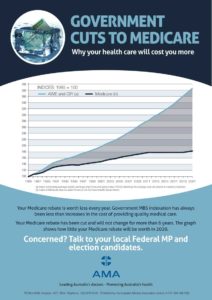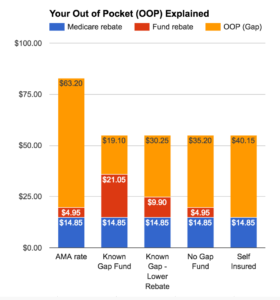Why is there an anaesthetic fee?
Specialist anaesthetists provide a service for a surgeon and a hospital but are not employed by them. I provide a service to you as the patient directly and you will receive a fee from me directly.
How is the anaesthetic fee calculated?
The Australian Medical Association (AMA) and the Australian Society for Anaesthetists (ASA) creates a list of services and prices each year which advises doctors what their services are worth based on the following principles:
- The “market price” of professional services, such as the cost of services provided by other professions, for example lawyers, accountants, electricians, and dentists.
- The extent of training and qualifications required to perform their services.
- The expected length of an anaesthetists career.
- The overhead costs that the professional incurs (employing staff, renting rooms, running an office, indemnity insurance, etc.)
- The unpaid component of an anaesthetists professional role (management, teaching, research, keeping up to date, etc).
- The complexity of the work involved.
- Risks of the work involved.
- The relative value of the service provided to the client.
The total fee for every anaesthetic depends on a variety of factors including length and complexity of an operation and each anaesthetic is allocated a certain number of “units”.
Why is there an out of pocket expense (gap)?
The out of pocket or “Gap” is the cost difference (gap) between the rebate you receive from medicare and your health fund and the total anaesthetic fee.
Neither the medicare rebate nor health fund rebates have kept up with inflation over the last 20 years. In fact, the medicare rebate has not increased at all since 2012. See the below graph to understand more.
Why does your choice of fund result in a different bigger out of pocket expense?
There are two types of health funds. These are “Known gap” funds and “No gap” funds.
Known gap funds
Known gap funds such as BUPA, Medibank Private, HCF, HBF, Australian Unity participating AHSA funds rebate at approximately $35 per unit. They allow anaesthetists to charge a limited amount of out of pocket before they then reduce their rebate to the medicare benefit schedule $19.80 per unit.
Known gap funds (lower rebate)
Known gap funds such as Mildura and Latrobe Health Funds rebate at a lower rate of approximately $25 per unit
No gap funds
No gap funds (NIB) rebate at approximately $31 per unit but reduce this to the medicare benefit schedule rate of $19.80 per unit if any out of pocket is charged by the anaesthetist. This will result in a larger out of pocket expense to you as the patient.
See the graph below to understand the impact of your choice of fund on your expected out of pocket expenses.
Compassionate billing
Many anaesthetists, including myself take financial hardship into account where necessary. If you are a pensioner or are experiencing financial hardship please don’t hesitate to contact my rooms on 9427 7899 during business hours.

